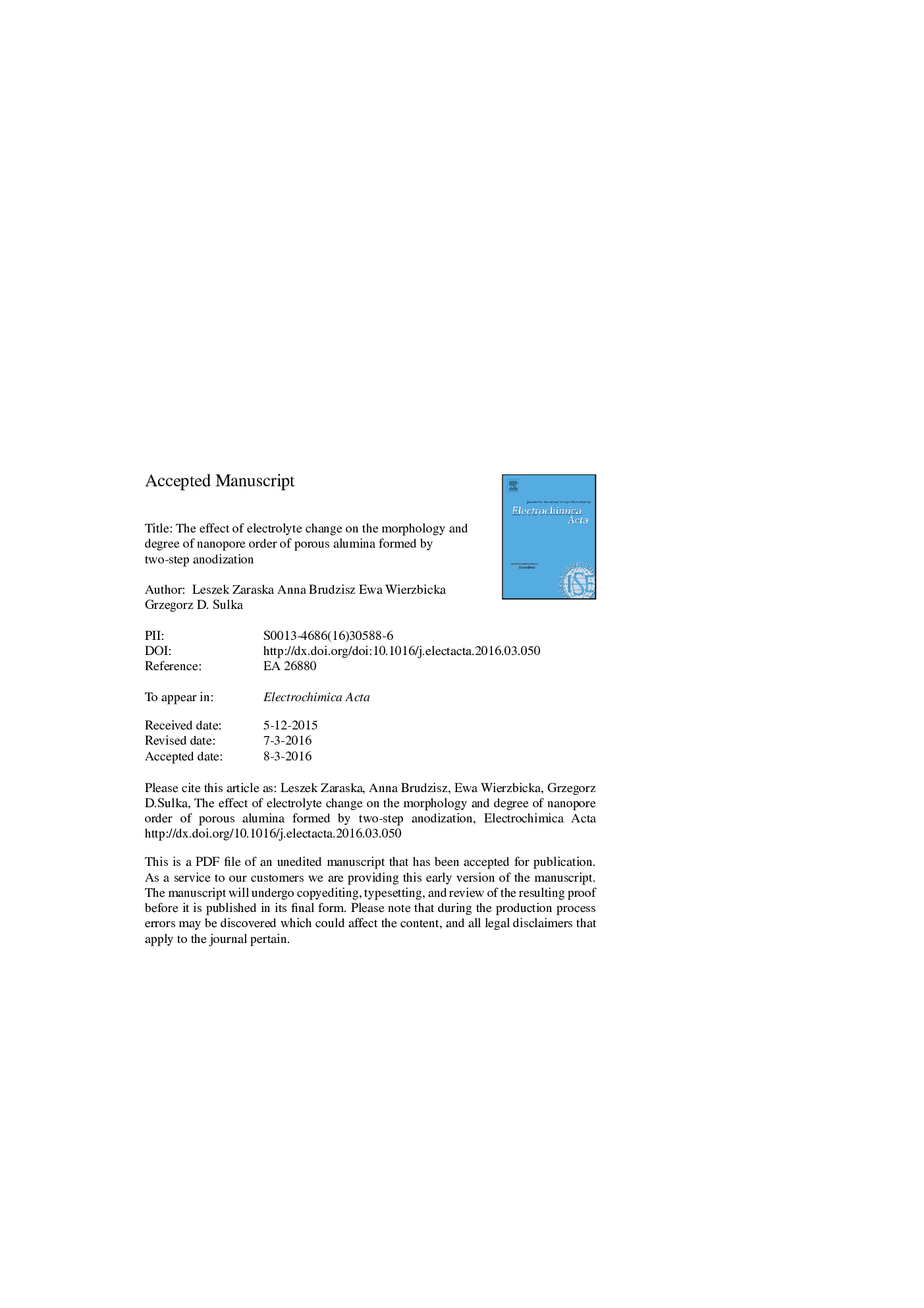| Article ID | Journal | Published Year | Pages | File Type |
|---|---|---|---|---|
| 6607938 | Electrochimica Acta | 2016 | 33 Pages |
Abstract
The aim of this work was to verify if the quality, regularity and spacing of nanoconcaves formed on the Al surface during the first step of anodization (pre-texturing) have a significant effect on the morphology of AAO layers grown during the second anodization continued at the same potential but in different electrolytes. High purity (99.999%) aluminum substrates were anodized at 25Â V and 45Â V in sulfuric acid and oxalic acid, respectively. After chemical etching of initially formed oxide in a mixture of chromic and phosphoric acid, the samples were re-anodized under the same potentials, but in different electrolytes (sulfuric, oxalic, phosphoric acids). It was confirmed that the regular nanoporous structure formed on the Al surface during the first anodizing step is initially replicated at the beginning of the second anodization, independently of the electrolyte used. However, these initially formed oxide layers exhibit significantly different pore diameters but the same pore spacing, which is determined by the cell spacing on the Al surface. When phosphoric acid is used as an electrolyte, the prolonged anodization resulted in the formation of typical serrated nanochannels. However, we successfully obtained the almost ideally-ordered porous anodic alumina layer with a thickness of about 700Â nm, and the average diameter of nanochannels of â¼50Â nm after the second anodization carried out for 20Â min at 45Â V in 0.3Â M H3PO4, outside from the self-ordering regime for this electrolyte.
Keywords
Related Topics
Physical Sciences and Engineering
Chemical Engineering
Chemical Engineering (General)
Authors
Leszek Zaraska, Anna Brudzisz, Ewa Wierzbicka, Grzegorz D. Sulka,
